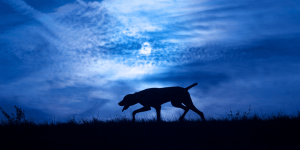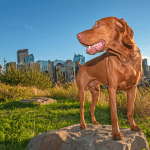Are Dogs Colour Blind?
The simple answer is No, dogs are not colour blind. However, neither do they only see in black and white, as was once thought. Dogs do see colours, but not in the same way humans do. This Holidays 4 Dogs article will take a closer look at the subject of canine colour sight.
In the eyes of humans and dogs, there are cells called cones, which catch light and respond to colours. Human beings have three different types of cones in the eye. Combined together, they provide a full range of colour vision. Dogs, however, only have two types, which means their colour vision is far less intense. This does not mean to say dogs are completely colour blind, though.
Scientists researching whether dogs are colour blind, discovered they don’t see rainbow colours like people do. Instead, the colours dogs see are much more subdued and lie within a narrower range.
As a result, dogs only see yellow, (browns) blue and grey. Colours they find particularly difficult to see, are red and bright orange. In this sense, dogs are more colour blind to the latter hues.
In short, while people see a range of rainbow colours from violet, blue/green, green, yellow, orange and red, dogs only see dark blue, light blue, grey, and light and dark yellow.
Therefore, if you were to throw an orange ball onto green grass – this will look to the dog like yellow on yellow. Gundog trainers often use orange dummies to make retrieves harder for the experienced dog, or to test the dog on ‘blind’ retrieves.
A blue ball, however, would stand out well on green vegetation, so for dogs new to retrieving – this would help make it easier for the dog to see.
Light sensitivity.
This doesn’t meant to say that a dog’s eyesight is poorer than humans, however.  The photoreceptors in their eyes, (rods) are far more sensitive to changes in light and movement than in people. Dogs have many more rods in their retinas than people do.
The photoreceptors in their eyes, (rods) are far more sensitive to changes in light and movement than in people. Dogs have many more rods in their retinas than people do.
This means dogs are far better at seeing things in dim light. They are also much more able to detect movement – ideal for night time hunting.
Conclusion.
With his acute sense of smell, and ability to detect movement, a dog’s lack of rainbow vision doesn’t hold him back from processing the world around him.


